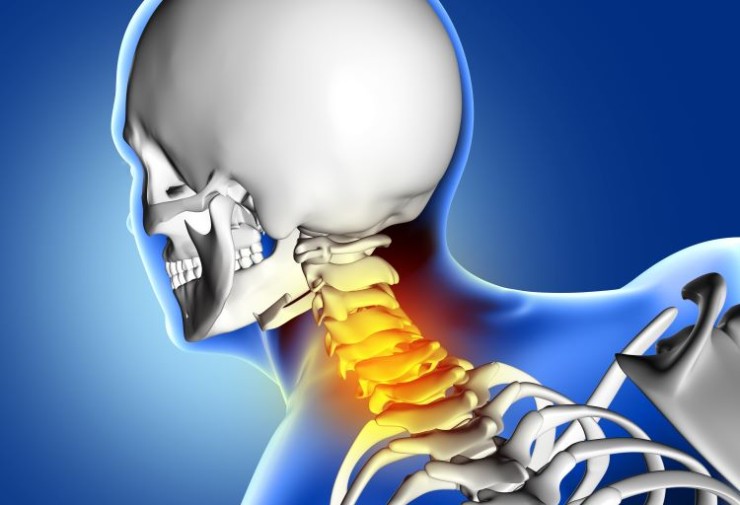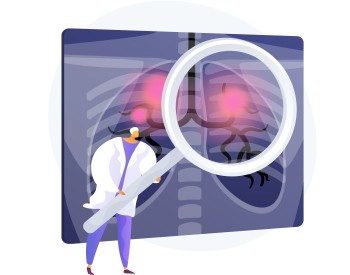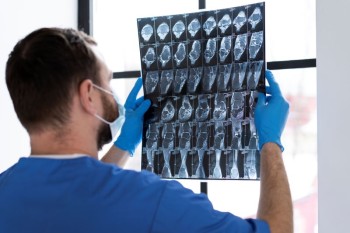
In the realm of diagnostic imaging, 3D CT cervical spine scans have become a cornerstone in providing detailed insights into the complex structures of the neck and spine.
3D CT Cervical Spine in India with Cost
3D CT Cervical Spine
Scan in Detail
In the fast-evolving landscape of medical imaging,
3D CT cervical spine scans have emerged as a groundbreaking tool,
revolutionizing the way healthcare professionals diagnose and treat conditions
affecting the neck and spine. This article delves into the intricacies of these
advanced scans, exploring their applications, benefits, preparation,
interpretation, and the future of this transformative technology.
Introduction
In the realm of diagnostic imaging, 3D CT cervical spine scans have become a cornerstone in providing detailed insights into the complex structures of the neck and spine. These scans utilize advanced technology to create three-dimensional representations, offering healthcare professionals a comprehensive view of the cervical spine.
Understanding 3D CT Cervical Spine Scans
What is a CT Scan?
Computed Tomography, often referred to as CT, is a medical imaging method utilizing X-ray technology to produce intricate cross-sectional images of the body. As time has progressed, this technology has advanced, leading to the development of more sophisticated 3D CT scans.
Evolution to 3D CT Scans
The journey from conventional CT scans to 3D imaging marks a significant leap in medical diagnostics. While traditional CT scans provide detailed 2D images, 3D CT cervical spine scans offer a holistic perspective, aiding in more accurate diagnoses.
How 3D CT Cervical Spine Scans Work
These scans involve a series of X-ray images taken from different angles around the body. A computer processes these images to create a three-dimensional representation of the cervical spine, allowing healthcare professionals to examine the structures in detail.
Applications and Benefits
Diagnostic Accuracy
One of the primary advantages of 3D CT cervical spine scans is their enhanced diagnostic accuracy. The three-dimensional visualization enables healthcare professionals to identify abnormalities with greater precision, leading to more effective treatment plans.
Visualization of Anatomical Structures
The detailed images produced by these scans facilitate a thorough examination of anatomical structures, helping healthcare professionals pinpoint issues such as herniated discs, fractures, or other abnormalities.
Comparison with Traditional Imaging Techniques
Comparing 3D CT scans with traditional imaging techniques highlights the superiority of the former in providing a more comprehensive understanding of the cervical spine. This comparison is vital for healthcare professionals to make informed decisions regarding patient care.
Preparing for a 3D CT Cervical Spine Scan
Patient Preparation
Patients undergoing a 3D CT cervical spine scan may need specific preparations, such as fasting or avoiding certain medications. Understanding and following these instructions ensures the scan's accuracy and reliability.
Safety Measures
Ensuring patient safety during the scan is paramount. Radiologists and technologists adhere to strict safety protocols to minimize radiation exposure and other potential risks.
Duration and Comfort During the Scan
The duration of a 3D CT cervical spine scan is relatively short, and efforts are made to make patients as comfortable as possible during the procedure. Open communication between healthcare providers and patients helps alleviate any concerns.
Interpreting the Results
Collaboration between Radiologists and Clinicians
The interpretation of 3D CT cervical spine scans often involves collaboration between radiologists and clinicians. This teamwork ensures a comprehensive understanding of the results and aids in formulating appropriate treatment plans.
Detecting Abnormalities and Potential Health Issues
Identifying abnormalities, such as tumors, spinal stenosis, or degenerative conditions, is a crucial aspect of interpreting the results. The detailed images allow for early detection and intervention, potentially preventing further health complications.
Importance of Accurate Interpretation
Accurate interpretation of 3D CT cervical spine scans is essential for effective patient care. Misinterpretations could lead to incorrect diagnoses and subsequently impact treatment outcomes.
Advancements in 3D CT Technology
Innovations in Imaging Resolution
Technological advancements continue to enhance imaging resolution in 3D CT scans. Higher resolution allows for more detailed and precise visualization of the cervical spine, contributing to improved diagnostic capabilities.
Integration of Artificial Intelligence
The integration of artificial intelligence (AI) in 3D CT imaging further elevates its capabilities. AI algorithms assist in analyzing images, identifying patterns, and providing additional insights that may not be immediately apparent to human observers.
Future Possibilities and Trends
As technology progresses, the future holds promising developments in 3D CT cervical spine scans. Ongoing research aims to refine the technology, making it even more accessible and effective in diverse healthcare settings.
Addressing Concerns and Misconceptions
Radiation Exposure
Concerns about radiation exposure during CT scans are common. However, advancements in technology have led to reduced radiation doses, making 3D CT cervical spine scans safer for patients.
Patient Anxiety and Claustrophobia
During the scan, certain individuals might feel anxious or claustrophobic. Healthcare professionals use diverse approaches to alleviate these concerns, including creating a comfortable setting and offering a detailed explanation of the procedure.
Clearing Common Misconceptions
Dispelling misconceptions surrounding 3D CT cervical spine scans is crucial for fostering confidence in patients. Educating individuals about the benefits and safety measures associated with these scans helps alleviate apprehensions.
Cost and Accessibility
Comparing Costs with Other Diagnostic Methods
While 3D CT cervical spine scans offer advanced imaging capabilities, it's essential to consider their cost in comparison to other diagnostic methods. Understanding these cost implications contributes to informed decision-making.
Accessibility to 3D CT Cervical Spine Scans
The accessibility of 3D CT scans varies across healthcare facilities. Assessing the availability of this technology in different settings ensures patients can benefit from its diagnostic advantages.
Case Studies and Success Stories
Real-Life Examples of Successful Diagnoses
Exploring real-life case studies highlights the impact of 3D CT cervical spine scans on successful diagnoses. These stories underscore the importance of early detection and accurate imaging in improving patient outcomes.
Impact on Patient Outcomes
Examining the overall impact on patient outcomes showcases the transformative potential of 3D CT scans in guiding treatment plans and enhancing the quality of healthcare delivery.
Potential Risks and Limitations
Identifying Potential Risks
While 3D CT cervical spine scans are generally safe, identifying potential risks, such as allergic reactions to contrast agents, is essential for ensuring patient well-being.
Limitations in Specific Medical Conditions
Certain medical conditions may limit the effectiveness of 3D CT scans. Understanding these limitations helps healthcare providers determine the most suitable imaging modality for each patient.
Ongoing Research and Improvements
Ongoing research in the field of medical imaging aims to address existing limitations and further improve the efficacy of 3D CT cervical spine scans. Staying informed about these developments is crucial for healthcare professionals.
Future Prospects for 3D CT Cervical Spine Scans
Research and Development in Medical Imaging
Continued research and development in medical imaging promise exciting advancements in the capabilities of 3D CT scans. These innovations contribute to the ongoing evolution of diagnostic tools in healthcare.
Emerging Technologies in the Field
Exploring emerging technologies in the field of 3D CT imaging provides a glimpse into the future landscape of medical diagnostics. From improved imaging algorithms to enhanced data analytics, the future holds immense potential.
Conclusion
In conclusion, the 3D CT cervical spine scan stands at the forefront of medical imaging, offering unparalleled insights into the intricate structures of the neck and spine. The advancements in technology, coupled with the dedication of healthcare professionals, underscore the transformative impact of these scans on patient care. As we look ahead, embracing and integrating these innovations into routine medical practices will undoubtedly enhance the accuracy and effectiveness of diagnoses, ultimately improving patient outcomes.
FAQs (Frequently Asked Questions)
1. Is a 3D CT cervical spine scan the same as a regular CT scan?
No, a 3D CT cervical spine scan is an advanced version of a regular CT scan. While both use X-ray technology, the 3D scan provides three-dimensional images for a more detailed view of the cervical spine.
2. Are 3D CT scans safe, considering the use of X-rays?
Certainly, 3D CT scans are deemed safe. Ongoing technological progress has significantly reduced radiation exposure, ensuring the safety of patients undergoing these scans. The advantages of precise diagnosis typically outweigh any potential risks.
3. How long does a 3D CT cervical spine scan take?
The 3D CT cervical spine scan usually takes a relatively brief time, typically falling within the range of 15 to 30 minutes. However, the exact duration might vary depending on individual cases.
4. What preparations are required before undergoing a 3D CT scan?
Patients may need to follow specific instructions, such as fasting or avoiding certain medications, before a 3D CT cervical spine scan. These instructions ensure the accuracy and reliability of the scan.
5. Can patients with claustrophobia undergo a 3D CT cervical spine scan?
Healthcare providers are aware of patient concerns, including claustrophobia. Efforts are made to create a comfortable environment, and patients are informed about the process beforehand to alleviate anxiety.
6. How do 3D CT scans contribute to early diagnosis?
The detailed three-dimensional images generated by 3D CT scans allow healthcare professionals to detect abnormalities at an early stage. Early diagnosis can lead to more effective treatment plans and improved patient outcomes.
7. Are 3D CT cervical spine scans expensive compared to other diagnostic methods?
While 3D CT scans offer advanced imaging capabilities, their cost may vary. Comparing costs with other diagnostic methods helps patients and healthcare providers make informed decisions.
8. Can 3D CT scans be used for routine check-ups?
While 3D CT scans provide detailed insights, they are typically reserved for specific diagnostic purposes. Routine use depends on the patient's medical history and the recommendations of healthcare professionals.
9. Do 3D CT scans replace other imaging techniques for cervical spine issues?
3D CT scans complement other imaging techniques and offer additional insights. The choice of imaging method depends on the specific case and the information required for an accurate diagnosis.
10. How often should a person undergo a 3D CT cervical spine scan?
The frequency of 3D CT scans depends on individual health conditions and the recommendations of healthcare professionals. It is not a routine procedure but is prescribed when necessary for diagnosis.
(0)
Login to continue



